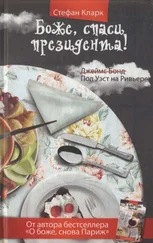Стефан Кларк - 1000 Years of Annoying the French
Здесь есть возможность читать онлайн «Стефан Кларк - 1000 Years of Annoying the French» весь текст электронной книги совершенно бесплатно (целиком полную версию без сокращений). В некоторых случаях можно слушать аудио, скачать через торрент в формате fb2 и присутствует краткое содержание. ISBN: , Издательство: Transworld Digital, Жанр: Старинная литература, на английском языке. Описание произведения, (предисловие) а так же отзывы посетителей доступны на портале библиотеки ЛибКат.
- Название:1000 Years of Annoying the French
- Автор:
- Издательство:Transworld Digital
- Жанр:
- Год:неизвестен
- ISBN:9781407067629
- Рейтинг книги:3 / 5. Голосов: 1
-
Избранное:Добавить в избранное
- Отзывы:
-
Ваша оценка:
- 60
- 1
- 2
- 3
- 4
- 5
1000 Years of Annoying the French: краткое содержание, описание и аннотация
Предлагаем к чтению аннотацию, описание, краткое содержание или предисловие (зависит от того, что написал сам автор книги «1000 Years of Annoying the French»). Если вы не нашли необходимую информацию о книге — напишите в комментариях, мы постараемся отыскать её.
1000 Years of Annoying the French — читать онлайн бесплатно полную книгу (весь текст) целиком
Ниже представлен текст книги, разбитый по страницам. Система сохранения места последней прочитанной страницы, позволяет с удобством читать онлайн бесплатно книгу «1000 Years of Annoying the French», без необходимости каждый раз заново искать на чём Вы остановились. Поставьте закладку, и сможете в любой момент перейти на страницу, на которой закончили чтение.
Интервал:
Закладка:
Thus it was that the British newspapers began to taste sweet revenge. In 2001, the continuing French ban on UK beef was declared illegal by Europe, and The Sun demanded that British cows should go back ‘on the moove’ into France. In 2002, The Daily Mail jeered, ‘French Beef Unfit to Eat’ amid discussions in Britain to ban imports of French beef because it had been found to contain traces of spinal cord.
In short, the Brits had successfully exported their vache folle crisis across the Channel and were now doing their old trick of looking down on the French from the recently attained moral high ground. And when France finally agreed to let its shops stock British beef again in October 2002, the turnaround was complete.
Not that France was going to let the ennemi enjoy its victory, of course. It imposed a ban on blood donors who spent six months or more in the UK between 1980 and 1996, even though for the final few years of that period, French beef was probably more dangerous.
And today, thanks to a combination of the innate trust in the noble French peasant (who, despite evidence to the contrary, is still believed to produce only hand-reared, grass-fed animals), a sense of invulnerability (for example, the French government successfully convinced many of its people that the Chernobyl radiation cloud stopped at the Italian border), and traditional distrust of British food, BSE is still seen as an inherently anglais thing. This was confirmed at the highest level in 2005 when President Jacques Chirac quipped that ‘the only thing they [the Anglais] have done for agriculture is invent the mad cow’.
Little did Chirac know, however, that jokes about British (and other nations’) food would soon cost his country very dear indeed …
1 There was some traffic in the other direction, the most famous example being ‘My Way’, which is an English-language adaptation of the French song ‘Comme d’habitude’ (‘As Usual’) by Claude François. If you listen carefully to the English version you can hear that it’s a French song – the melody is basically a variation on a single theme and the rhythm is totally undanceable.
2 It was apparently his real name, although verge is a slightly medical word for penis.
3 See Chapter 12.
28
Napoleon’s Dream Comes True
From the end of the Second World War right up to the 1990s, Britain and France were like a bickering old couple, making snide remarks about one another while getting on with everyday life. And like that bickering couple, for as long as they could remember, they’d been in separate beds – in this case, on opposite sides of the Channel.
The opening of the Channel Tunnel in 1994 was therefore a seismic shock, like suddenly throwing the old couple into a double bed after years of being free to stretch out in all directions on their own single mattress. The question was, would they lunge in with knees and elbows, or choose to snuggle up? And who, if anyone, would manage to hog the duvet?
Return to Waterloo
The first realistic attempt to dig a passage under the Channel was made in 1875, when Britain and France passed simultaneous laws giving permission to a firm called the Channel Tunnel Company Limited to begin boring holes in the cliffs of Dover and in Sangatte, near Calais.
The machines to be used were British. A man from Dartford in Kent (now the site of one of London’s best-known Thames tunnels) with the impossibly patriotic name of Captain Thomas English invented a boring machine that was actually very interesting, because it could dig through a half a mile of rock a month, and allowed the Brits to predict confidently that they would arrive at mid-point by 1886. They applied for public money to fund the project, but the British government was having second thoughts about doing away with the nation’s greatest defence against those unreliable continentals, so it quoted a sensible-sounding law banning railway tunnels below sea level and put a stop to the project.
By this time, there was already a mile and a half of tunnel on the Dover side, its opening marked by one of the miners who had begun the digging, a Welshman who had clearly left school before mastering English spelling (his carved inscription reads ‘This tunnel was begubnugn in 1880 William Sharp’). Not wanting to give up, the stubborn tunnellers carried on digging once the government inspectors had left, presumably hoping that people would believe they were just looking for fossils.
However, the inspectors came back to enforce their ban, and the boring machines fell silent. Even so, the Channel Tunnel Company was never actually wound down, and it resurfaced in 1964 when the British and French made a joint announcement saying that they both wanted to start digging again. The head of the Channel Tunnel Company, an ageing British aristocrat called Leo d’Erlanger, declared that work would take five years. The only problem was that no one on either side could say when tunnelling would actually begin – though this silence shouldn’t have been too surprising given that the French president of the time was still de Gaulle, not the greatest fan of cross-Channel co-operation.
In 1967 serious planning finally began, and in 1971 a dual state-funded proposal headed by the Channel Tunnel Company and the Société française du tunnel sous la Manche was given the green light, with the two governments’ commitment to getting value for money being made obvious in the way they refused to waste millions getting PR firms to think up clever names for their companies.
Digging resumed in 1973, and was going well until the Brits pulled the plug on the tunnel in 1975, saying that the project was already 200 per cent over budget and they couldn’t afford it. Napoleon’s dream was once again dead in (or rather, under) the water.
It was refloated by an unexpected ally, Margaret Thatcher, who in 1981 gracefully conceded that she wouldn’t oppose a Channel Tunnel as long as it needed absolutely no state funding. In other words, go ahead but you’re on your own.
This call for private enterprise had a predictable effect. One of the designs put forward was a crackpot scheme to suspend a tube across the Channel on 340-metre-tall pylons – the bidders clearly hadn’t understood the meaning of a key word in the specifications: ‘tunnel’.
A very low-costing idea was proposed by a conglomerate of ferry companies, though of course no one suspected, or suspects, them of trying to sabotage competition to their cross-Channel transport monopoly by obtaining the contract to build a tunnel and then failing to deliver.
Finally, an equally low-costing bid from Eurotunnel was accepted, and no one suspected, or suspects, them of putting in a low offer to obtain the contract and then ask for state aid once the budget ballooned to more realistic proportions. In any case, Thatcher and Mitterrand felt confident enough to sign the contract giving Eurotunnel the go-ahead in January 1986.
Digging began near Folkestone in 1987 and at Sangatte in 1988, and by a miracle of Anglo-French co-operation, the two teams actually met in the same place in the middle of the Channel on 1 December 1990, when a Brit called Graham Fagg drilled through the last half-metre of the rock that had separated England from France for an estimated 8,000 years. Fagg (sorry, but surely they could have found someone with a better name for this Neil Armstrong moment of undersea engineering?) reached through the hole and shook hands with his French counterpart, Philippe Cozette (whose name rather appropriately sounds like the French word for a cosy chat, causette ). In fact, though, this ‘breakthrough’ was a ceremony staged for the media, and the two teams had made sure they were both in the same place a few weeks earlier, when an almost invisible hole five centimetres wide was cut between the French and British sections of tunnel.
Читать дальшеИнтервал:
Закладка:
Похожие книги на «1000 Years of Annoying the French»
Представляем Вашему вниманию похожие книги на «1000 Years of Annoying the French» списком для выбора. Мы отобрали схожую по названию и смыслу литературу в надежде предоставить читателям больше вариантов отыскать новые, интересные, ещё непрочитанные произведения.
Обсуждение, отзывы о книге «1000 Years of Annoying the French» и просто собственные мнения читателей. Оставьте ваши комментарии, напишите, что Вы думаете о произведении, его смысле или главных героях. Укажите что конкретно понравилось, а что нет, и почему Вы так считаете.












